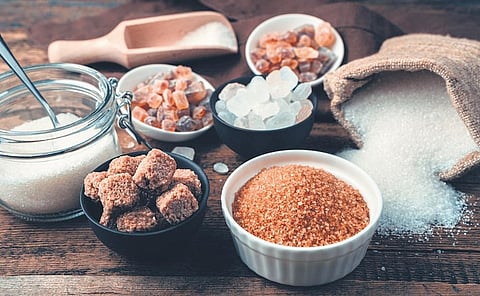Sweet beginnings
CHENNAI : Almost 100 km from the city, Raghavanaidu Kuppam near Thiruttani holds acres of space for the growth of golden goodness — jaggery. From meticulously selecting the high-yielding sugarcane crops, nurturing them for months to extracting the juice and finally preparing the jaggery, farmers in the village dedicate their life to produce the best outcomes.
Ravi, a 50-year-old farmer from the village has been making jaggery since he was a child. His family, for generations, has been doing the same job. Every year, he and his wife Vanitharani resort to sugarcane cultivation and jaggery-making from Purattasi to Thai months in the Tamil calendar. Ravi has his land of one acre. Since that is not enough, he also farms in the nearby three-acre land, which he took for lease at Rs 30,000 per year. “We have to plough the land, cultivate the crops, water the field and get involved in the overall processes of jaggery-making,” shares Ravi.
During the early hours of the day, he walks nearly half a kilometer to reach his land. After a few hours of farming, he goes for daily wage jobs earning Rs 300 to Rs 400 to support his wife and three kids. During the sugarcane season, Ravi earns Rs 500 working on the field and Vaitharani, earns just Rs 300. The profits aren’t consistent. Sometimes they are only up to Rs 2,000-Rs 2,500. “During the festival seasons, like Deepavali and Pongal, there is a surge in the sale. That time the prices are high. The rest of the months, the rates stay the same,” he says. Apart from the financial restrictions, Ravi asserts that they also struggle to get consistent manpower as the job doesn’t pay them enough.
Explaining the processes involved in the jaggery-making, Ravi says, “When the sugarcanes are ripe, we employ a few more people for harvesting them and sorting those bundles of stacks. After being harvested, the sugarcane is extracted to yield its juice. The process involves crushing the cane with equipment to extract its liquid essence. The collected sugarcane juice is used to produce jaggery.” The juice is boiled over controlled heat, allowing impurities to rise to the surface. They carefully skim off these impurities, leaving behind the pure, concentrated liquid. As the juice thickens, it is poured into moulds or trays to cool and solidify. The hardened mixture is set into round shapes and sold off.
“From one tonne of sugarcane, we get almost 150 kg of jaggery,” Ravi says. A minimum of five people work with him daily. He adds that they sell different types of nattu sakkarai and they usually differentiate based on the colour — white, brown, or golden. The jaggery blocks are then sent in wholesale to sellers. From Raghavanaidu Kuppam, it travels to Chennai, Tirupati, Tiruchy, and other parts of Tamil Nadu and Andhra Pradesh.
Determined to not let this important product go extinct, the makers hope to provide more yields every year to aid in the celebration of festivals like Pongal with much fervour.

